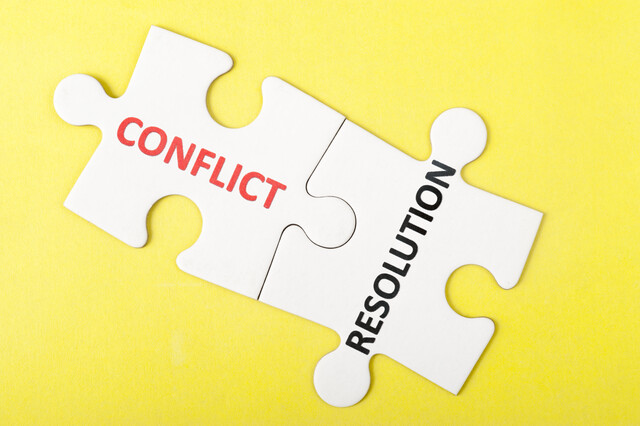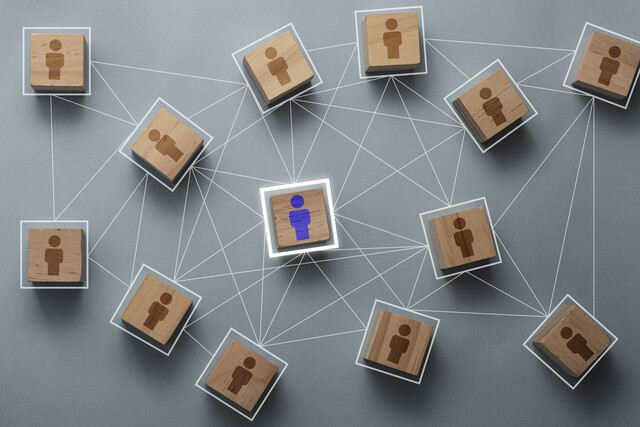There are numerous factors that contribute to the circumstances that cause harassment to occur in the workplace. These can be things like the relationships between employees, the workload, attitudes of staff members, and the management style of the employer and administrative staff, just to name a few. But what impact does the industry you work in have on workplace harassment? Are there some professions that are naturally inclined towards harassment, based on the aspects of the job? Likewise, is there a particular career path that you can take that will protect a person from harassment at work simply due to the nature of their occupation?
As environment plays such a huge role in workplace harassment, there is some wonder as to the specific the jobs that people have in those environments. This article will explore the possible influence that industry and occupation might have upon harassment and the associated circumstances. Topics will also include the industries and professions that are more susceptible to harassment and possible theories as to why that is.
It seems rather logical to think that aspects of industry may contribute towards the risk factors for harassment in the workplace. Each industry has its own associated work environment-the work environment of a school is different than that of a paper mill, for example. There are particular elements that are unique from work environment to environment and they can have multiple varying impacts on employee behavior. Most business leaders will look at those elements in order to determine their effect on things like worker productivity in order to make improvements.1 If there are industries that have frequent issues related to their work environment(s)-accident risks, high stress levels, etc.-then it's likely that some of the same risk factors for those issues present in the working environment can influence harassment.
Included as a part of their study on workplace harassment, the EEOC also released data on the risk factors that can increase the possibility of workplace harassment.2 These risk factors were concluded based on data collected in 2015, and is recent enough to suggest that these factors are still present in the workforce that is currently active today. Some of them included:
- Homogeneous Workforces-Work environments that had a strong demographic majority, e.g. an environment that had a majority of male workers, had a higher risk than those that were more equal or diverse.3 Those who would be considered minorities in a particular industry's demographics would be noticeably different compared to their peers, and that imbalance can make them a target.
- High Diversity-Likewise, an industry that is highly diverse is at risk for instances of harassment there's a potential for clashing cultures, beliefs, views, etc. While it can be greatly beneficial for promoting tolerance and learning in the industry, it can bring some problems if the different demographics do not get along.
- Non-conformity to Societal Norms-Industries that actively go outside of what has been the norm in business and society are taking a risk. No matter how much industry leaders encourage being different and going against societal norms, there will likely still be those-even within that same industry-who are traditionalists and may respond poorly.
- Young or Inexperienced Workers-Those who are considered new to an industry or work environment in some way are understandably not going to immediately get how things work. As they are still learning the ropes, so to speak, they're at a bit of a disadvantage. Historically, inexperienced employees are at a greater risk of being taken advantage of or abused by their more experienced peers.4 Younger workers may also lack the maturity that their older counterparts have, and that may make them reckless and ignorant towards the consequences of their actions.
- Satisfaction-based Compensation-Industries that tie their workers' salaries and paychecks to the satisfaction of their customers are at a significantly higher risk for workplace harassment than those that do not. Workers in those industries may accept and tolerate abusive or harassing behavior from their peers, superiors, and customers out of fear of not being paid or being financially punished for not pleasing clientele. The idea of "the customer is always right" may even be used as a justification for those who are harassed due to poor satisfaction.
Is Occupation Or Profession A Factor?
A person's occupation or profession, like the industry they work in, may make them more susceptible towards experiencing workplace harassment. Certainly, if the industry your job is a part of has a lot of the risk factors mentioned in the EEOC's study, then your job itself may be more prone by association. The factors at hand will certainly be influential, and different professions will have different factors. Even if the industry you work in doesn't have a higher risk of workplace harassment, that doesn't mean your job can't have a high risk. Some occupations exist in multiple industries or have a counterpart or equivalent in others. It's possible that there could still be harassment, but in different forms or from different kinds of harassers.
Occupation may be a factor for workplace harassment based on the demographics associated with it. Take gender for instance: there are some professions that are traditionally male-dominant and some that are traditionally female-dominant, each with their own stereotypes. It's likely that you've already thought of examples for each based on the association of gender roles. Now try to picture that same profession, but with someone of the opposite sex of the stereotype-it's a bit harder, isn't it? Those established gender stereotypes support the social norms for many occupations and are largely accepted in the public eye.5 Going against that stereotype is considered "different" and that non-conformity, as mentioned, can increase your risk. Male nurses, for example, are in what has long been viewed as a "feminine" occupation; despite more men getting into the profession, they are still targets for sexist-based harassment because they are going against the traditional gender/social norms.6
Demographics of an occupation may also still be a factor even when traditional gender roles are adhered to. Traditionally female professions may be more at risk than male ones simply because women are statistically more prone to workplace harassment and bullying than men are. Keep in mind that harassment doesn't always happen with harasser and victim being members of the opposite sex-same-sex harassment cans still occur and may be why a female-dominant profession has a high rate of workplace harassment.7
What Industries And Occupations Are More Susceptible?
So if there are some industries and occupations that have more risk factors for harassment than others, what are they? According to research, some of the industries and professions that are highly susceptible to workplace harassment of any kind include:
- Restaurant and Food Service-One of the risk factors discussed is satisfaction-based compensation and pay, which is the standard practice throughout the food service industry. Statistically speaking, waitressing is considered to be one of the most harassment-prone jobs in the country.8 Sexual harassment is especially high, with 59% and 50% of women and men, respectively, stating that they had been sexually harassed by a customer at least once per month according to one study.9 Monthly instances of harassment from staff was also high, with 66% came from management and 74% from co-workers for female responders, and 58% of men reported it from all staff levels. What's worse is that about half identifying the harassment as normal; however, 60% still stated that it made them uncomfortable. That normalization makes it harder for actions to be taken to address instances and prevent future ones, regardless of who the harasser is.
- Retail-Because of similarities to restaurant workers as members of the service industry, retail workers are also one of the most common victims of workplace harassment. This also includes from co-workers, management, and customers. In a survey of 2,235 female employees (in full-time and part-time positions), those in retail reported the second highest rate of harassment at 36% after food/restaurant service (42% reported).10 The mentality of the "customer is always right" that is prevalent in the service industry may be to blame. The pressure to please and be at the whim of the customer forces workers to sacrifice their own comfort and safety in order to get paid, have job security, and avoid potentially worse punishment from management.11 As mentioned previously, harassment in service-industry professions are heavily viewed as normal, and the attitudes of the industry may be to blame for why things are not improving.
- The STEM Fields-Professions in STEM or science, technology, engineering, and math have long been male-dominated, but there is a growing female population in the fields. The women who attempt to get into STEM jobs and programs are faced with a disturbing amount of harassment, as it is often used to discourage them from continuing their careers or even considering getting into STEM in the first place.12 Much of it is deeply normalized, rarely reported, and instances that are reported are either pushed aside as a non-issue or victims are told to "tolerate" or "put up with" it.13 The harassment can persist throughout their career, from education to retirement. Despite the successes of women in STEM fields, many of them are still subjected to intense sexual harassment and are even fetishized by their male colleagues instead of being viewed as knowledgeable peers.14 It's continued presence in STEM is interesting, as there is a push to bring more women into STEM and get young girls interested in the sciences. When the discussion of how to do that comes up in the public eye, there is surprisingly little to no mention of the harassment directed at women that has become so expected.
- Arts and Entertainment-Harassment in the arts and entertainment industry is nothing new and you may not find it very surprising to see it mentioned here. It's so common nowadays to hear about celebrities as harassers and/or as victims that it doesn't faze the public as much as it once did back during Hollywood's Golden Age. However, the Golden Age wasn't free of harassment either-it was as frequent as it is now, if not more so, and was often a means of control for studios and industry leaders since Hollywood's inception.15 In the 1960s, for example, actress Tippi Hedren dealt with frequent harassment from director Alfred Hitchcock while working on The Birds and Marnie. When she refused his advances, he threatened her to destroy her career for it.16 While in Hedren's case her career survived the harassment and her work is still known today, most outcomes in similar cases in the industry don't often fair as well. Most victims of harassment in the industry today are told that fighting, reporting, or otherwise thwarting any kind of harassment directed at them could be career suicide and that they'd best keep quiet.17
- Legal Fields-If harassment is illegal, wouldn't the legal field be one of the last places you'd think to find it happening? There is an established structural hierarchy in the legal field that makes it easy for those with power to be abusive towards those who lack it.18 Sexual harassment-women are the minority in the field-and discrimination-of clients, of employees, etc.-are the two most common. Much of it is treated as "he-said, she-said", which may be due to an understanding of harassment laws that perpetrators in this field have. Unfortunately, that also means that instances are not often addressed as they should be despite their prevalence.
- Medical Field-While rates of harassment have gone down in the medical field, it's still a problem. A 2016 study found that the most common form of harassment was based on gender, with 66% of women and 10% of men stating that they had personally experienced it on the job.19 Earlier studies found that harassing behaviors were strikingly prevalent, with 88% reporting to have experienced verbal harassment and bullying in the medical field.20 The perpetrators were not always isolated to victims' peers and superiors in the field either, as patients were often harassers as well. However, this may be due to other factors, like existing prejudices, stress, and the nature of the patient's condition.

























